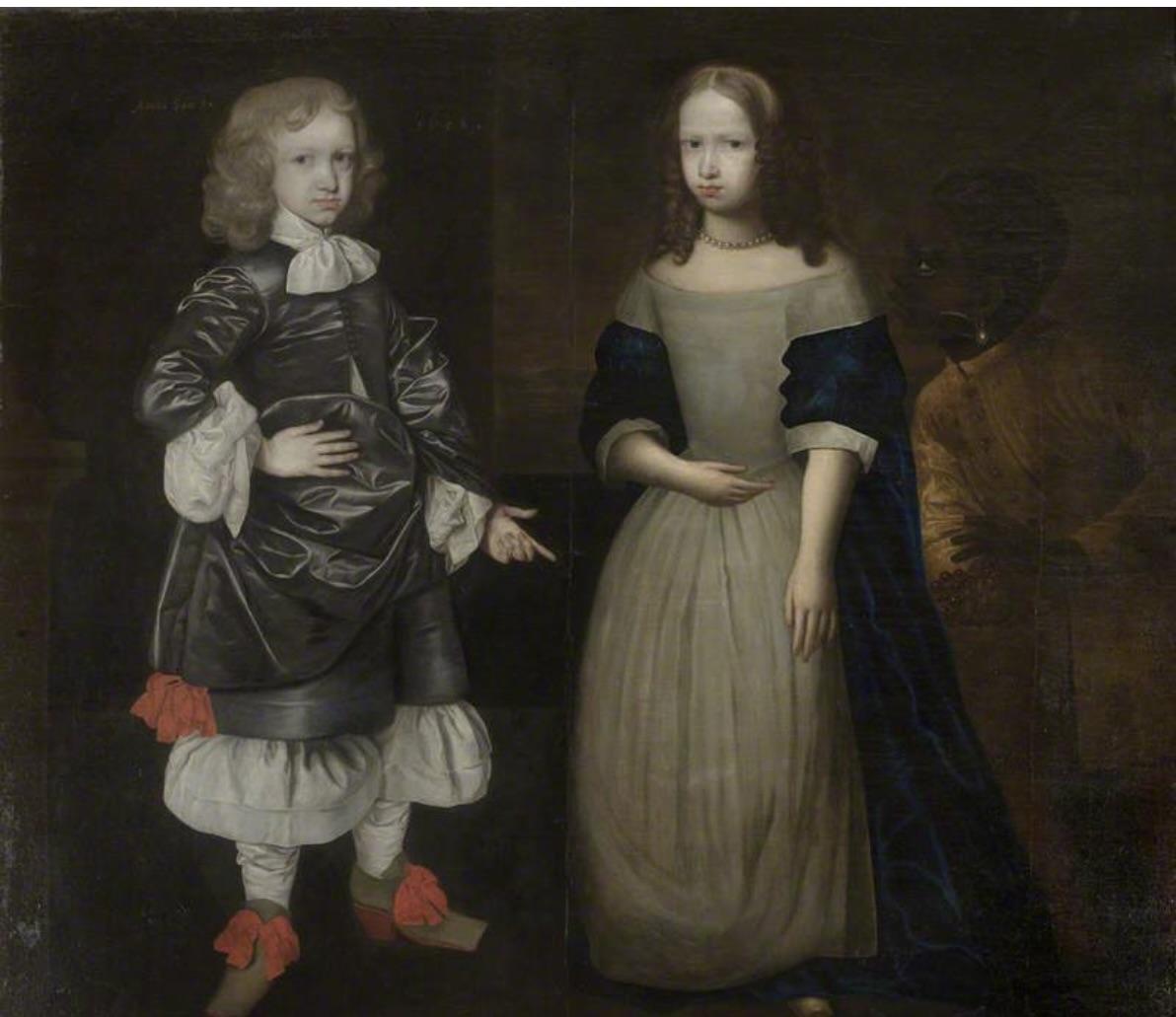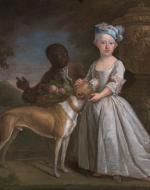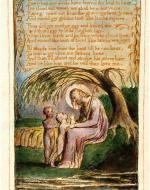Created by Dayanara Guzman on Mon, 04/15/2024 - 00:20
Description:
Introduction:
Throughout the span of art history, from around the 1600s to 1800s, we are faced with the troubling erasure of Black people in paintings. Although this period in art history was one with a lot of careful detail and rich artistic expression there was neglect of representation of Black people. Black individuals were rarely a main subject in British art, if they were included in these aristocratic type paintings, they were usually in small roles or sometimes even “erased” from the painting. Black individuals were often depicted in the lens of colonialism, rather than just individual human beings. The lack of representation of Black people in British art was backed up by the same ideologies of colonialism and the need for the English to feel superior even within these paintings.
This misrepresentation did not only happen in art but also in literature. The Little Black boy by William Blake, is a poem that has mis-spoken for black people and views on enslavement and mistreatment. The Little Black Boy reinforced negative stereotypes through the lens of Christianity like the need for “overcoming” blackness in heaven rather than celebrating it on Earth with the whiteness of the English child.
The paintings I will present in my gallery are reflected societal attitudes of the time, but this also contributes to the unfortunate erasure of the historical black narrative that has marginalized black individuals. I will present the effects of cultural erasure alongside the text The Little Black Boy by William Blake. Recognizing this erasure is crucial in understanding selective storytelling as well as the importance of inclusive representation.
Painting 1: A Boy and A Girl and A Black Page(1658)- Anglo- Dutch School
In this picture we are presented with two white children and one black child. In the painting we see this narrative of the whiteness of two children over the blackness of one child. In this image the black child merges with the darkness of the background, simplifying the black child as only being a background character to the lives of these two white children. This misrepresentation only exemplifies how Black individuals were de-individualized because of the idea of racial hierarchies present within the 1600’s. Not only does this artist completely erase the black child but also reinforces the negative attitude of the time, that black people serve as in insignificant part of society and should be kept as a background character.
Painting 2: A Young Girl with an Enslaved Servant and a Dog (1725)- Bartholomew Dandrige
In this image we see a White child next to a dog however, in the background we see a black child. The white child is the center of the painting whereas the black child in the background blends in enough to be visible but not as much as the white child. This image emphasizes the white supremacist ideology of racial hierarchy. English paintings of the 18th century reduced black individuals as a property. In this painting we also see the dog have more spotlight than the black child. This painting depicts only a small portion of the dehumanization of Black individuals in this era.
Image Source : https://collections.britishart.yale.edu/catalog/tms:715
Painting 3: The Little Black Boy- William Blake
In the poem, The Little Black Boy by William Blake. We get this narrative that the black child is torn at the fact that the White English child is somehow closer to God because of his white skin. The poem suggest that the Black boy needs guidance from the White child to find his way to Heaven while having dark skin. This suggest that the black child believes there is a need for spiritual guidance of the white child to “overcome” blackness rather than embrace this God given trait of dark skin. In the 4th stanza the speaker of Blakes poem says , " For when our souls have learn'd the heat to bear/ The clouds will vanish we shall hear his voice. Saying: come out from the grove my love and care,/ And round my golden tent like lambs rejoice.", supports Blakes idea that there is a better than in Heaven than on Earth for Black individuals, completey disregarding the racial injustice done on Earth. Furthermore creating this false sterotype around Black people in literatature and reinforcing the "White Savior" complex within the ,predominantly white, English community. In the Image we see there are two children, one black and one white on the knees of Jesus. The positioning of the child, the white one being on Jesus, supports the colonialist view that lighter skin makes you closer to God. We see the black child next to the white child, as if he were asking him for a request from Jesus. Although this poem was supposed to bring awareness of the mistreatment of Black individuals, it did the opposite and reinforced negative stereotypes and narrative around slaves around this time.
Painting 4: Mary Helden with a Dog and her Black Page,'Sambo'(1739)- Charles Phillips
In this Painting we see Mary Helden with a dog and her Black page Sambo. Here we see another example of the dehumanization of black people in English art. Sambo, Mary Helden’s servant is portrayed in a submissive and compliant manner. This is another harmful stereotype that was present in the 18th century. The term “Black Page” further dehumanizes Sambo. Another harmful interpretation is the dog in the painting was supposed to be a parallel to Sambo’s loyal-ness to Mary Helden. By this, is creates a harmful deception of Sambo making him to seem as another piece of property to add to this painting.
Work Cited:
https://artuk.org/discover/stories/the-visible-invisibility-of-black-peo...
https://www.poetryfoundation.org/poems/43671/the-little-black-boy





